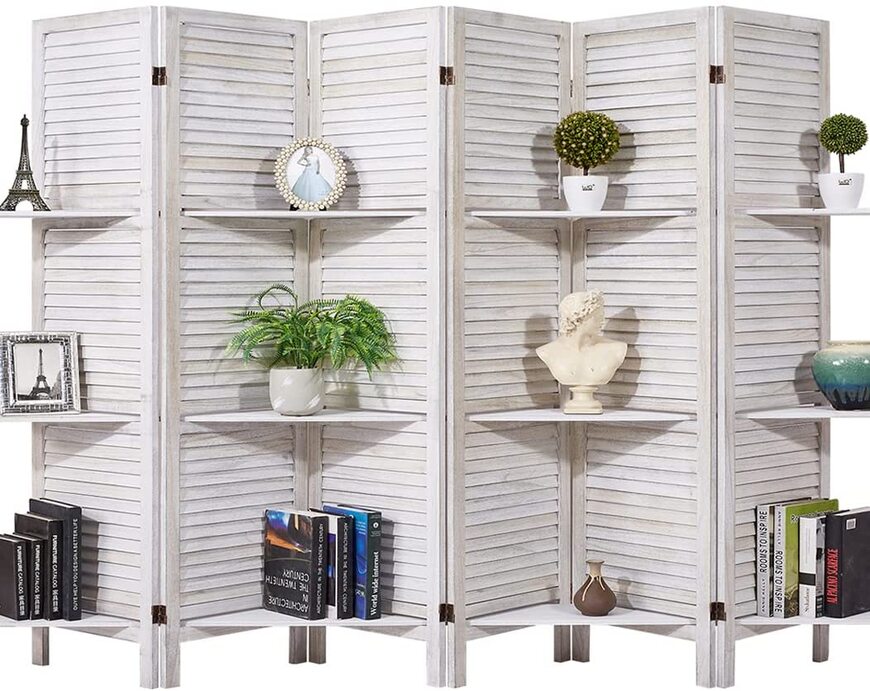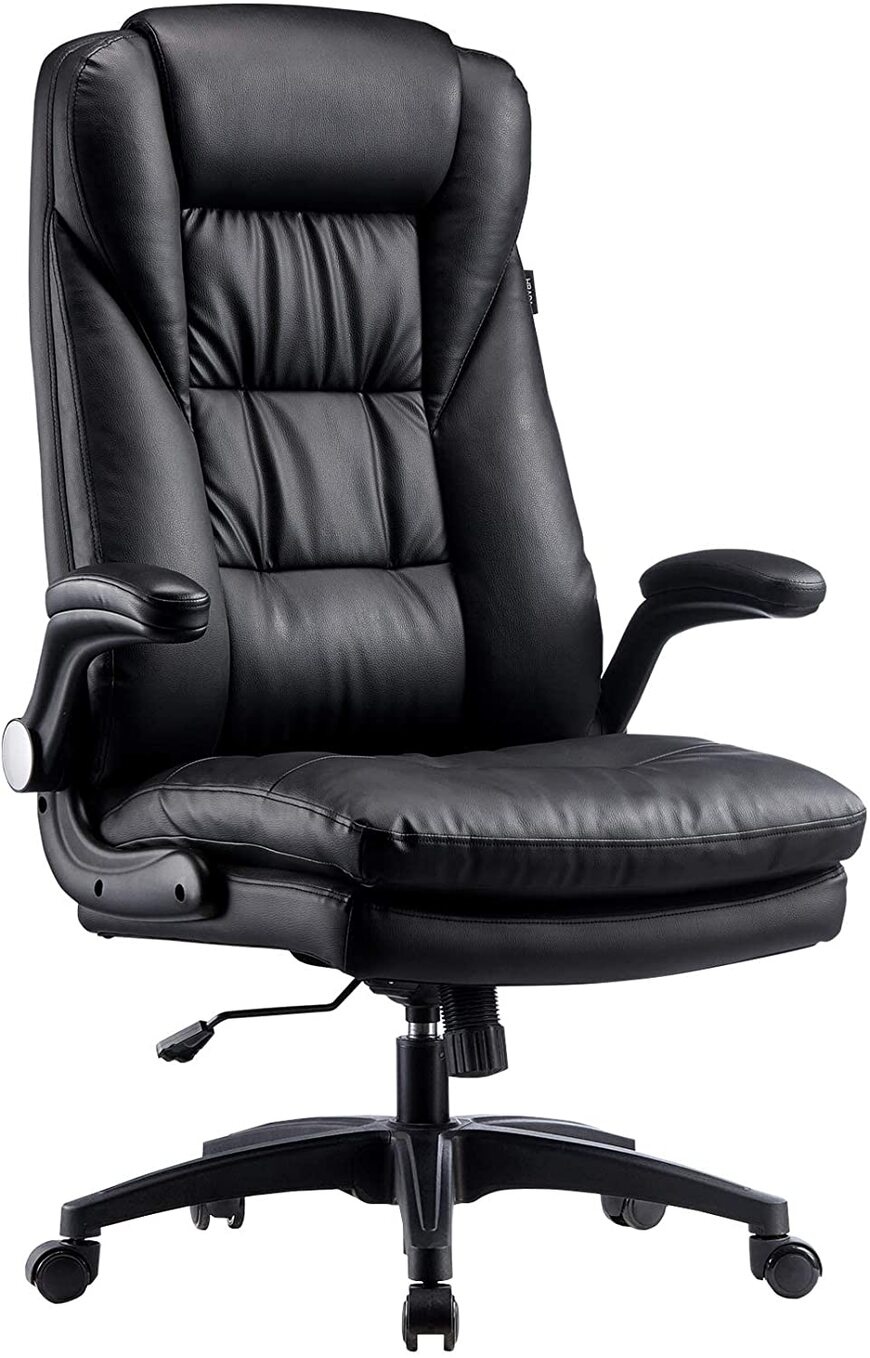This article contains affiliate links. If you use these links to buy something, we may earn a commission.
Remote work is not a new concept. It’s been around since as early as 1979, when IBM allowed five of its employees to work from home as an experiment. Four years later, 2,000 employees at the tech company were working remotely, and by the late 1980s, it had become a mainstream choice for employers, including the likes of American Express, General Electric and JCPenney.
Although working from home is as polarizing a topic as the open-office concept, COVID-19 has significantly accelerated the WFH trend — and, for better or worse, it’s here to stay.
This means that the makeshift home office that many people scrambled to set up for the pandemic just won’t work. It’s time to invest in a long-term WFH office setup with the right tools and equipment that support your health, wellbeing and productivity. And that’s what this guide is for.
Here are my 10 tried-and-tested tips for the ideal work-from-home setup.
Don't want to read? Watch the video instead:
1. Find the optimal location for your WFH workspace
The first thing you need to consider when setting up your home office is: location, location, location.
This will be an easy choice if you have an empty room available in your home. For most people, this will be a spare bedroom or a basement. Personally, I converted my hobby room into a hybrid home office/hobby room.
Depending on your living situation, you might not have many options about where to set up your office. If you live in a studio apartment, for example, you won’t have the luxury of setting up your workspace in a dedicated room. This is where you’ll need to get creative and think about what space you do have (like unused corners in larger rooms) — and use it the most effective way possible.
If you share your home with other people and you’re not able to use a dedicated office room, meanwhile, it’s a good idea to invest in a privacy divider — this is especially handy if you have clients visiting your home office.

Give your home office some privacy!
This six-panel wooden room divider from Rose Home Fashion keeps your WFH setup private, and comes with shelves for your books, equipment and decorations.
Buy on Amazon2. Create a dedicated workstation
Whichever room you choose to work in, you should create a dedicated workstation. Sure, you could set up shop on your kitchen or dining table (as long as you don’t mind clearing up everything before every meal), but if you have the space, then it’s a good idea to invest in a good desk — an essential component to any well-equipped home office.
This can be anything from the simplest of consoles to one with a substantial desktop. Think about how much room you need for your computer or laptop, additional monitors and other equipment — as well as how much space you have available — and choose a desk that fits your needs.
You’re truly spoiled for choice when it comes to office desks, but there are a few things to keep in mind when making a purchase:
- Does it promote a healthy posture?
- Do you need additional storage? Then consider a desk with in-built drawers.
- Is it easy to move around? You never know when you’ll decide you want a new view!
- What shape desk is best for your space? If space is limited, a corner desk would be most effective.

Need a new desk?
CubiCubi’s sturdy vintage-style computer desk comes in five sizes and eight colors, and features a storage bag to stop clutter from building up and has an iron hook for your headset.
Buy on Amazon3. Get comfy
Don’t underestimate the power of a good office chair!
Sure, you could grab a chair from your dining or kitchen table, but sitting at a desk for eight hours a day without the right support will inevitably lead to a host of problems, including back, neck and shoulder pain, poor blood circulation, weight gain, and even indigestion.
Your best bet is investing in an ergonomic office chair that is comfortable, supports your back and lumbar, and adjusts to the height of the desk you’re working at. If you like to keep your feet up, like I do, you can also put a small footstool under your desk.
Meanwhile, make sure the positioning of your monitor is comfortable for your eyes and neck. It should be placed directly in front of you, 18–24 inches away from your eyes, and tilted back to 10–20 degrees so that you’re slightly looking down on your screen at an angle. You might need to do a little experimenting here to get your monitor in the perfect spot so that you don’t end up craning your neck or hunching your shoulders.

Update your office chair
Sit in comfort while you work with the Hbada executive chair. Features adjustable height, flip-up arms, a 360-degree swivel, double-layer cushioning, and high-end soft PU leather.
Buy on Amazon4. Speed up
Another essential component to your work-from-home setup is a fast and strong internet connection. After all, how do you expect to get any work done if your internet keeps dropping?
If your internet connection is holding you back, it’s a good idea to speak to your service provider to see what the problem is or if you can upgrade to a better plan with more bandwidth. Alternatively, you might want to consider switching providers altogether.
If the root cause of your slow internet connection is the distance between your router and your workspace, then the obvious solution would be moving closer to the router where the WiFi signal is stronger. But if moving your workstation isn’t possible, consider investing in a good WiFi extender.

Boost your WiFi range!
Stay connected with TP-Link’s universally compatible AC750 WiFi extender, which covers up to 1,200 square feet and connects up to 20 devices.
Buy on Amazon5. Invest in the right tech and gear
No effective work-from-home setup is complete without the right tech and gear.
This largely depends on your particular profession, but you’ll typically need:
- A laptop or computer
- A laptop stand or monitor mount
- A webcam
- A mouse and mouse pad
- A wireless keyboard
- Noise-canceling headphones
- A multi-port hub
- A charger and charging adapter
- Computer speakers
- A portable storage drive
Most companies will offer a stipend or reimburse you for any WFH-related expenses, so be sure to ask your employer about relevant policies and budget details. (If they do, keep in mind that you likely won’t be able to keep anything when you leave the company!)

Block out external noise
Anker’s Soundcore Life Q20 active noise-canceling headphones reduce ambient noises by up to 90% and feature 100% stronger bass and up to 60 hours of playtime.
Buy on Amazon6. Check your lighting
When planning your home office setup, one of the most important things to consider is the room’s lighting — nobody wants to work in the dark, after all.
Sitting near a source of natural light, like a window or skylight, is ideal, as it improves the work environment. It also improves productivity, decreases drowsiness and reduces the risk of computer vision syndrome, according to a Cornell University study (PDF). If you don’t have a lot of natural light coming into the room, though, then artificial lighting is the way to go.
Either way, the trick is ensuring your lighting is placed correctly: directly in front of you. If it’s behind you, you’ll just be a silhouette on your video calls. If it’s on one side, half of your face will be in the dark.
On that note, make sure your background is tidy, well-organized and, above all, professional — that means relocating your collection of action figures or any artwork depicting nudity. If that’s not really an option, consider changing your video chat software’s virtual background. Whether you use Skype, Zoom or something else, you’ll have the option to blur your background or choose a custom image from your computer or one of the pre-defined images.

Let there be light!
TROPICALTREE’s LED desk lamp has it all: 3 color temperatures, 10 brightness modes, a foldable arm, and a durable clamp that can be rotated freely in 360 degrees.
Buy on Amazon7. Tidy up your space
While a messy desk may very well be a sign of creative genius, according to researchers at the University of Minnesota, a clean and tidy workspace boosts efficiency and productivity, reduces stress levels, eliminates distractions, and even inspires confidence. Plus, you’ll make decluttering and organization guru Marie Kondo proud, who recommends keeping your home office in tip-top shape by discarding what you don’t need and keeping all similar items in the same place.
This means reselling or donating old books and recycling old documents, as well as rehoming office supplies to a dedicated desk organizer and adding storage space (like filing cabinets, paper trays and drawer units) to your office setup for all the essentials. It’s also a good idea to invest in a cord organizer to tame all your wires.

Reduce the clutter
Save desktop space with VEDETT’s all-in-one desk organizer. Features 6 compartments, 1 pencil holder and 72 desk accessories.
Buy on Amazon8. Get a plant
Indoor plants are more than just living decorations or a way to bring a love of gardening to your home office. They also provide many (sometimes surprising) science-backed benefits. Indeed, studies have shown how they can improve air quality, reduce stress and anxiety, enhance your focus, boost your productivity, and even improve your mood.
The verdict? Add a plant (or two) to your home office setup.
Some low-maintenance plant ideas include:
- Snake plant (Dracaena trifasciata)
- Golden pothos (Epipremnum aureum)
- English ivy (Hedera helix)
- Peace lily (Spathiphyllum wallisii)
- ZZ plant (Zamioculcas zamiifolia)
If you’re feeling a little crafty, meanwhile, you could make your own DIY succulent or moss terrarium. I’ve used cushion moss (Leucobryum glaucum) and fern moss (Thuidium delicatulum) for mine, and decorated the terrarium with a few rocks and a small tree branch.
9. Add a personal touch
If your home office is too plain, your productivity levels will probably take a hit and you’ll resort to retiring to your living room or bedroom — where you’ll get nothing done other than binge-watch your favorite show on Netflix. But by adding a personal touch or a splash of color, you’ll be able to create a space that you enjoy being in, one that’s a little less “corporate-y” and a little more inviting.
This can be anything: a framed family photo, a treasured souvenir from your travels, a themed mouse mat, scented candles, an inspirational quote poster hung on the wall, a beloved piece of art, memorabilia from your favorite sports team, or even a collectible action figure. For me, it’s a buildable LEGO calendar, which I keep on my desk and turn the numbered cubes every day to show the correct date.
10. Manage your fur-workers
One of the great things about working from home if you’re a pet parent is that you get to spend more time with your beloved fur-babies. But this is as much a curse as it is a blessing. Take it from me: as the owner of personal butler to four cats who have a knack for standing between me and my laptop (either in turns or, worse, simultaneously), it can be difficult to get any work done.
One way around this is to shut your fur-workers out of the room (if you can) — especially during video calls with clients or coworkers. Alternatively, if you’re tormented by pangs of guilt, you could put a spare chair in the corner or a pet bed next to your desk so your pets have a spot to nap close to you. (Personally, I’ve put a couple of pet beds on my desk. I find that this stops my cats from disrupting my routine — save for having to break up the occasional spat over whose turn it is to use the beds.)
Final thoughts
Whether you’re working from home by choice or by necessity, careful planning of your office setup is essential not only for your output but also for your mental and physical wellbeing.
Whatever you do, though — whether you set up shop in a spare room or on your kitchen table, you use a standing desk or a more traditional one, or you decorate your space with plants or trinkets — the important thing to remember is to create a space that works for you.
Got another tip to share or a question to ask? I’d love to hear from you. Just drop a comment below — and don’t forget to share this article with your WFH coworkers!


